How Does Velcro Work? The Science Behind the Stick
Velcro is often taken for granted. Its simple functionality belies an ingenious design based on microscopic hooks and loops. Understanding the science behind Velcro not only provides insight into a common invention but also highlights the principles of biomimicry and the power of scientific innovation applied to everyday solutions. This guide delves into the mechanics of Velcro, its diverse applications and the factors influencing its performance. Learn how this simple invention works and its impact on various industries. Let’s see!
1. Understanding Velcro: A Simple Yet Ingenious Fastener
Velcro, a fastening solution recognized for its user-friendliness and reliable grip, stands as a prime example of clever design inspired by nature. The concept arose from observing how burrs naturally cling, showcasing the effectiveness of biomimicry in practical applications.
This remarkably simple yet effective system comprises two components: a hook side and a loop side. When pressed together, these sides interlock, creating a firm and dependable closure. Velcro’s adaptability has led to its widespread adoption across a multitude of uses.
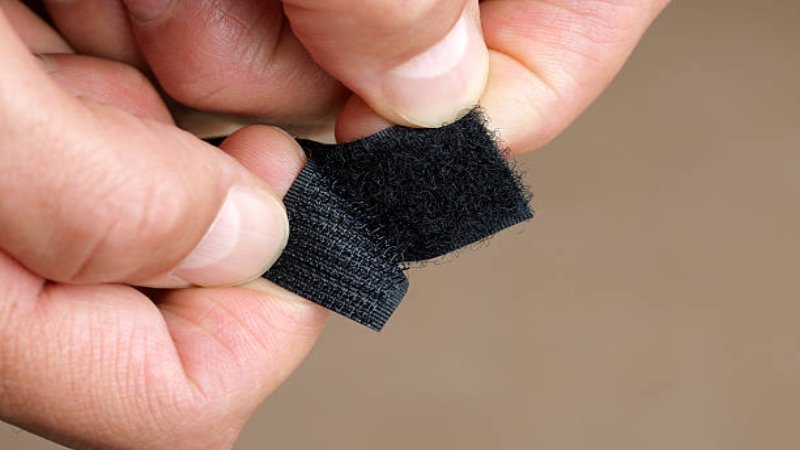
2. The Mechanics of Velcro: Hooks and Loops in Action
Velcro’s functionality relies on two components: the hook side and the loop side. The hook side features numerous tiny hooks that interlock with the soft loops on the loop side. Pressing the two sides together creates a secure bond; separating them releases the interlocking mechanism. This simple yet effective design allows for repeated fastening and release.
2.1 The Hook Side: Tiny, Stiff Hooks
The hook side consists of numerous small, stiff hooks, typically made of nylon. These hooks possess significant tensile and shear strength, contributing to Velcro’s durability. Their design allows for strong grip and a secure hold, creating a durable closure system.
2.2 The Loop Side: Soft, Fuzzy Loops
In contrast to the hook side, the loop side presents a soft, fuzzy surface composed of fabric loops. These loops provide a receptive surface for the hooks to engage with, creating the secure fastening action. The textile nature of this side contributes to the overall adhesion of the system.
2.3 Creating a Secure Bond: How Hooks and Loops Interact
When the hook and loop sides of Velcro are pressed together, a fascinating mechanical process takes place. The rigid hooks on one side effectively engage and become intertwined within the soft, flexible loops on the other.
This interaction is what creates the robust and dependable bond that Velcro is known for, making it a practical solution for a wide range of applications. A significant advantage of this type of closure is its reusability. Velcro can be repeatedly fastened and unfastened without a noticeable reduction in its holding capability.
The resilience and strength of this bond are typically evaluated using measures such as peel strength, which quantifies the force required to separate the two sides, and cycle life, which indicates the number of times the Velcro can be opened and closed before its performance begins to decline.
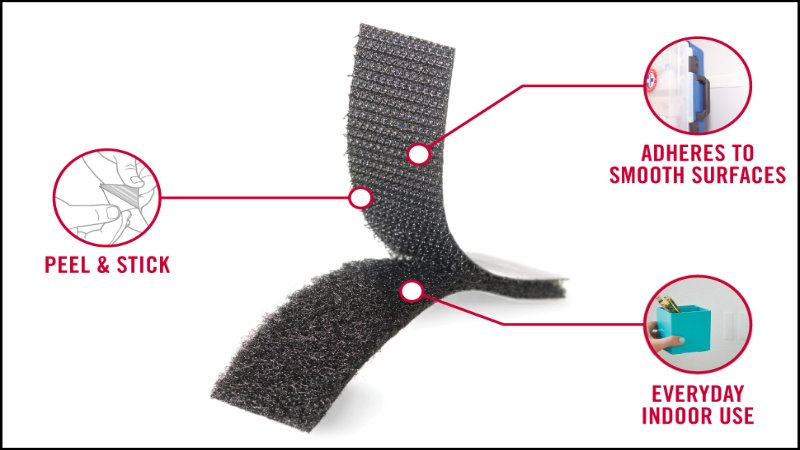
2.4 The Role of Loops in Microscopic Fastening
Velcro’s functionality is rooted in its microscopic structure. The hook side features millions of tiny, stiff hooks that perfectly interlock with the numerous soft loops on the loop side. This intricate interaction creates a strong yet easily separable bond, inspired by the design of burrs, which allows for effortless engagement and repeated use.
3. Materials and Manufacturing: Building a Better Fastener
3.1 Nylon and Polyester: The Foundation of Velcro
Nylon and polyester are the go-to materials in the production of Velcro, and this choice is driven by their inherent material advantages. Nylon stands out for its exceptional tensile strength, meaning it can withstand significant pulling forces without breaking, and its impressive durability ensures longevity.
Polyester complements nylon by contributing resilience, allowing the Velcro to spring back to its original shape even after repeated use, and offering good resistance to general wear and tear. The selection of these materials is not arbitrary; it’s a deliberate decision based on their robust strength, which is essential for ensuring the fastener maintains its performance and reliability over time.
These characteristics are not just beneficial, they are fundamental to the consistent quality and widespread trust associated with the Velcro brand.
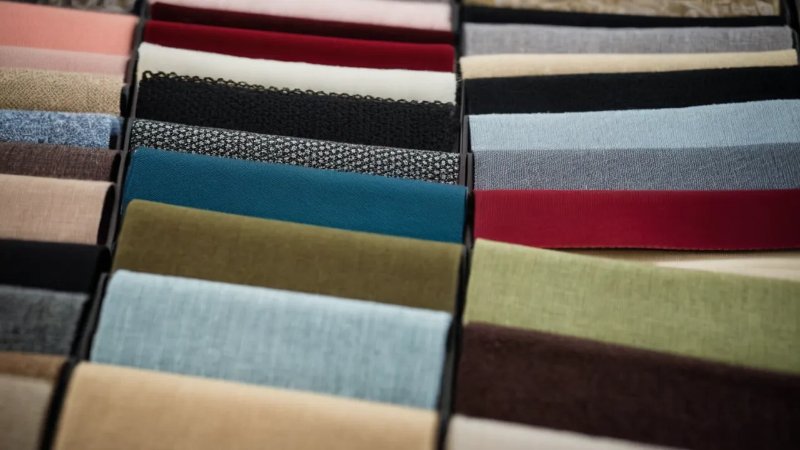
3.2 Weaving and Trimming: The Velcro Manufacturing Process
Velcro manufacturing begins with the weaving of the hook and loop materials. Precise trimming of the loops is crucial for optimal hook engagement and fastener performance. Early mechanization of this process presented significant challenges, requiring innovative engineering solutions to achieve the necessary precision and efficiency. Continuous advancements in mechanization and materials contribute to improved quality and production speed.
3.3 Detaching Velcro: Breaking the Bond
Separating Velcro involves overcoming the interlocking force between the hooks and loops. Pulling the two sides apart requires sufficient force to break the numerous individual hook-loop connections. The ease of detachment depends on factors such as the material’s composition, the surface area in contact and the overall strength of the bond often referred to as peel strength.
4. Strength and Durability: Understanding Velcro’s Performance
4.1 Peel, Shear, and Tension: Measuring Velcro’s Strength
To truly understand how well Velcro performs, it’s important to look at how its strength is measured. There are three key measurements that are commonly used: peel strength, shear strength, and tension strength. Peel strength tells us how much force is needed to pull the two sides of Velcro apart, like peeling a banana.
This is a crucial measurement for applications where the fastener might be pulled open from the edge. Shear strength, on the other hand, measures how well Velcro resists forces that try to slide the two sides apart horizontally, like when you try to slide two pieces of paper past each other while they are stuck together.
This is particularly important when the closure needs to withstand sideways pressure or movement. Lastly, tension strength assesses how much pulling force Velcro can handle when force is applied directly along the length of the fastener, trying to pull it straight apart. Think of it like pulling on both ends of a belt.
A high peel strength is essential for applications where a strong initial grip is needed and where the primary stress is pulling the fastener open. Conversely, high shear strength becomes critical when the application involves forces that could cause the Velcro to slide or shift sideways. Understanding these different strength measurements helps in choosing the right type of Velcro for specific needs, ensuring it will perform reliably in its intended application.
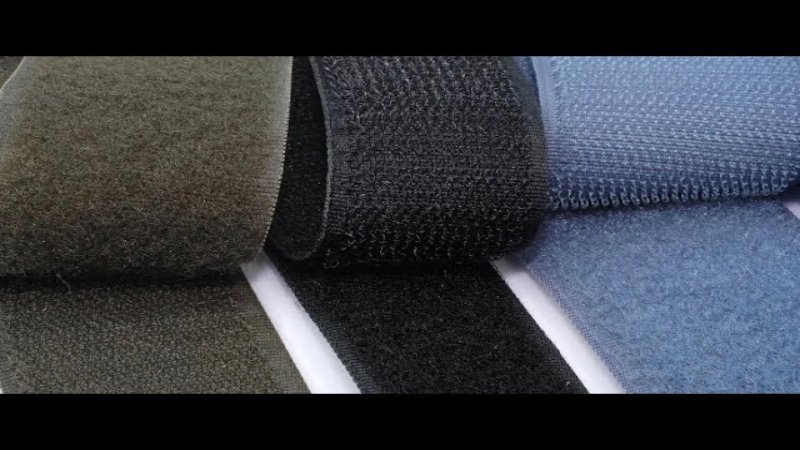
4.2 Cycle Life: How Many Times Can You Use Velcro?
Cycle life refers to the number of times Velcro can be fastened and unfastened before its performance degrades significantly. High cycle life Velcro is ideal for frequently used applications such as clothing closures. Low cycle life Velcro is suitable for situations requiring a strong one-time closure. This is often overlooked but understanding cycle life helps determine the best Velcro for your application.
5. From Burrs to Fasteners: The Story of Velcro’s Invention
5.1 George de Mestral: The Inventor of Velcro
George de Mestral, a Swiss engineer, is credited with Velcro’s invention in the 1940s. A walk in the woods where he noticed burrs clinging to his clothes and his dog’s fur, sparked his interest. This simple observation laid the foundation for his innovative work. He was driven by a desire to create a practical and durable alternative to traditional fasteners.
5.2 Inspired by Nature: The Burdock Burr
De Mestral closely examined burdock burrs, noticing their microscopic hooks. This inspired the concept of a fastening system mimicking this natural design. This biomimicry led to the creation of hook-and-loop tape. His innovation transformed a common annoyance into a revolutionary product.
5.3 The Name “Velcro”: A Blend of French Words
The name “Velcro” itself is quite interesting, as it’s actually a blend of two French words. It’s what’s called a portmanteau, a word created by combining the sounds and meanings of other words. In this case, “Velcro” comes from “velours,” which is French for velvet, and “crochet,” which means hook.
This combination is quite fitting because it really captures the essence of how the fastener works and what it feels like. The “velours” part hints at the soft, fabric-like texture of the loop side, while “crochet” directly refers to the hook component that provides the grip. So, the name “Velcro” is not just a random label; it’s a clever and descriptive term that perfectly reflects the material composition and functional design of this ingenious fastener.
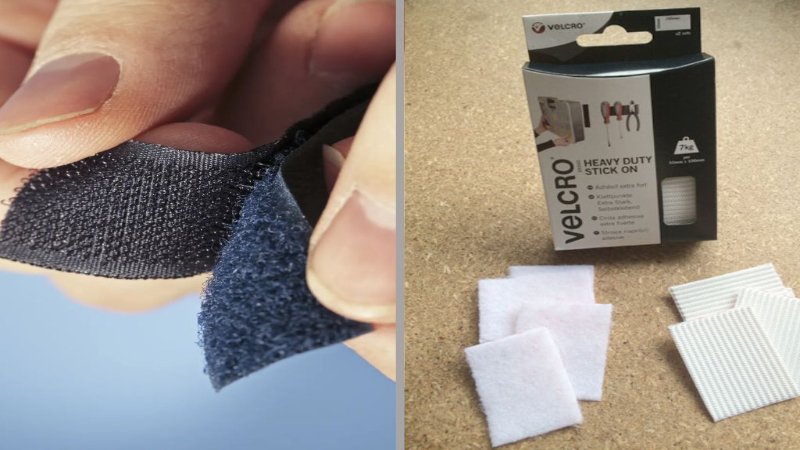
6. Velcro’s Versatile Applications: From Everyday Use to Space Exploration
6.1 Clothing and Footwear: A Staple of Modern Fashion
Velcro is a common fastener in clothing, shoes and accessories, offering convenience and adjustability. Its ease of use makes it particularly suitable for children’s clothing and footwear. This simple closure system is a staple in the apparel industry, improving accessibility and ease of use.
6.2 Aerospace and Beyond: Velcro in Extreme Environments
NASA utilizes Velcro extensively in spacecraft and spacesuits. Its ability to withstand extreme temperatures and pressures makes it indispensable in space exploration. The U.S. Army also employs it in various applications, showcasing its reliability in demanding environments. Its durability and reliability are proven in even the most challenging conditions.
6.3 Healthcare and Medical Devices: A Reliable Fastener
In healthcare, Velcro’s reliability and ease of use are valued in medical devices such as blood pressure cuffs and orthopedic braces. Its secure closure is essential for the safe and effective function of these devices. This makes it a crucial component in many medical applications.
6.4 Industrial and Everyday Uses: The Versatility of Velcro
Velcro finds applications in diverse industries. The automotive industry utilizes it in interior components. Home goods frequently incorporate Velcro for organization and closures. Industrial sectors also employ it for various fastening needs. Its adaptability makes it a valuable tool across numerous fields.
7. FAQs about Velcro
7.1 Why does Velcro make a ripping sound when detached?
The characteristic ripping sound of detaching Velcro originates from the rapid disengagement of numerous hooks and loops. As the two surfaces separate, the hooks bend and then snap back, creating vibrations that we hear as a ripping sound.
7.2 Can Velcro lose its stickiness over time?
Yes, Velcro’s stickiness can diminish due to several factors. Repeated use can bend or break hooks, reducing grip. Accumulated dirt, lint and debris also hinder hook-loop interaction. Extreme heat or chemical exposure can damage the material, affecting its performance and causing material degradation.
7.3 How can I clean Velcro to restore its stickiness?
Cleaning Velcro involves removing debris from both hook and loop sides. A stiff brush, tweezers or tape effectively removes lint and hair. For stubborn debris, a toothbrush or rubbing alcohol can help restore stickiness. Thorough cleaning improves the fastener’s performance.
7.4 What is the strongest type of Velcro?
Industrial-grade Velcro typically offers the highest strength. Larger hooks and loops, often from robust materials, coupled with a strong adhesive backing, contribute to superior peel, shear and tension strength. Heavy-duty options are designed for demanding applications.
7.5 Is Velcro waterproof?
While the nylon and polyester materials in Velcro are inherently water-resistant, standard Velcro isn’t fully waterproof. Prolonged water exposure can reduce effectiveness and adhesive backings may weaken. Specialized waterproof Velcro with stronger adhesives and materials is available for wet environments.
Read more:
- Gluing on Patches: Your Ultimate Guide to Perfect Application
- Iron on Patches to a Backpack: Easy DIY Guide & Tips
- How to Tell if a Patch is Iron-On: Foolproof Methods
Velcro’s functionality relies on the ingenious interlocking of microscopic hooks and loops. The strength and durability of this hook and loop system are determined by material properties and manufacturing precision. Understanding the Velcro mechanism from its initial inspiration in nature to its sophisticated manufacturing process highlights its innovative design.






















